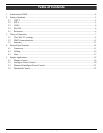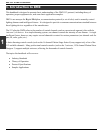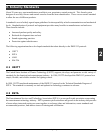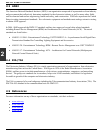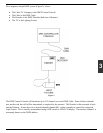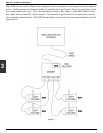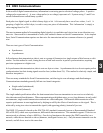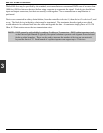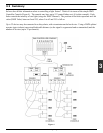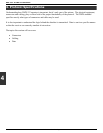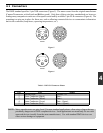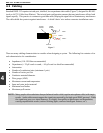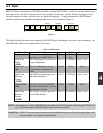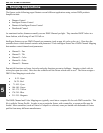
www.elationlighting.com 11
3.2 DMX Communications
In the world of digital communications, information is sent using precise electrical voltage pulses. A positive
voltage pulse represents a 1. A zero voltage pulse (or no voltage) represents a 0. Systems using 1’s and 0’s to
encode information are called binary systems.
Each pulse in a digital signal is called a binary digit, or bit. A bit can only have one of two values, 1 or 0. A
grouping of eight bits, called a byte, is used to carry one piece of information. This ‘information’ is simply a
value ranging from 0 to 255.
The most common method of transmitting digital signals is to send data one bit at a time in one direction over
one wire. Since each bit is transmitted in series, this method is known as Serial Communication. In its simplest
form, Serial Communication requires one data wire for transmission and one common reference (or ground)
wire.
There are two types of Serial Communication:
• Synchronous
• Asynchronous
In Synchronous data transmission, data is sent as a group of characters in a single stream of bits known as a bit-
stream. For this method to work, timing devices at both ends must be in perfect synchronization, requiring
precision equipment at a higher cost.
In Asynchronous data transmission, data is sent one byte at a time. Asynchronous devices do not require perfect
synchronization, but their timing signals must be close (within about 5%). This method is relatively simple, and
therefore inexpensive.
There are many standards for Serial Communications, each having its own advantages and disadvantages.
Communications standards generally fall into two broad categories:
• Single-ended (unbalanced)
• Differential (balanced)
The single-ended specifications allow for data transmission from one transmitter to one receiver at relatively
slow data rates and short distances. When communicating at high data rates, or over long distances in real-world
environments, single-ended transmission methods are often inadequate. Differential data transmission offers
superior performance in most applications by helping to nullify the effects of interference on the signal. This is
achieved by using two wires to transmit the signal (with opposing polarity) instead of just one.
The DMX 512 protocol is based on the EIA/TIA-485 standard (commonly known as Recommended Standard
485 or RS-485), which uses asynchronous, differential data transmission. This standard supports 32 devices on
one network at a distance of up to 4000 feet. One device functions as the master (the DMX controller) on a
network, while the rest function as slaves (dimmers, intelligent fixtures, etc.). Only the master transmits over the
network, and all slaves receive the same data.
3



